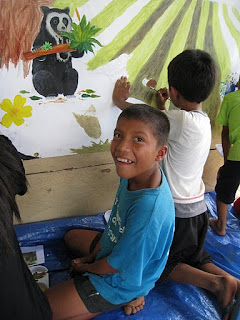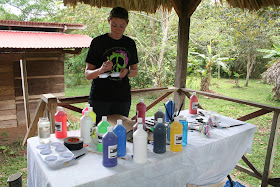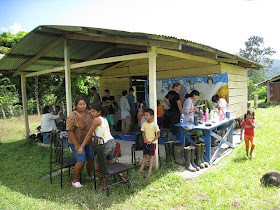Anarelys and Isbeth working on the mural
Joseph painting his flower for the mural
Ms. K painting her Poison Dart Frog for the mural
Ms. K taking a pose for the camera
Katie painting the Harpy Eagle Panama's national bird
Ms. K setting up on the first day of the mural
Diana, Kerry, Katie, Lucas and Ms. K working on the mural
Carlitos working on the mural
Diana painting with Angela
In La Zahina painting the community mural
Young Painters

Juan working on the mural
Thomas, Connor, Nicole, and kids from La Zahina
Painting on the side of the school house cafeteria
The whole group in La Zahina with finished mural
The mural hanging up at the school house in La Zahina
The whole group in La Zahina

















































